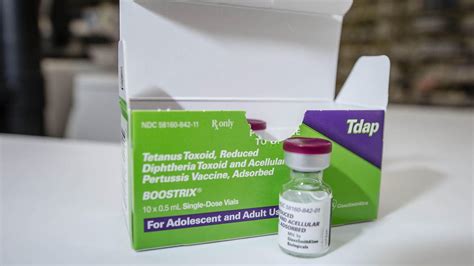Recovering from a knee replacement surgery can be a challenging and daunting task, but with the right mindset, preparation, and strategies, patients can navigate this journey more smoothly. The road to recovery begins even before the surgery, and being informed about what to expect and how to manage the process can significantly impact the outcome. Here are 12 knee replacement tips designed to help individuals achieve a faster and more comfortable recovery.
1. Pre-Surgery Preparation
Before undergoing knee replacement surgery, it’s essential to prepare both physically and mentally. This includes stopping smoking, as smoking can significantly delay healing and increase the risk of complications. Maintaining a healthy weight can also reduce the stress on the new knee joint. Engaging in light exercise, as recommended by your doctor, can improve circulation and strengthen the muscles around the knee, aiding in a faster recovery.
2. Understanding the Procedure
Having a clear understanding of what the surgery entails and what to expect during recovery can reduce anxiety and make the process less intimidating. Discuss with your surgeon the type of knee replacement you’ll be having (partial or total), the materials used for the implant (metal, plastic, or ceramic), and any concerns you might have about the procedure or the recovery period.
3. Follow Post-Operative Instructions
The instructions provided by your healthcare team are tailored to your specific needs and the specifics of your surgery. Following these instructions carefully, including medication schedules, wound care, and physical therapy routines, is crucial for preventing complications and ensuring the knee heals properly.
4. Physical Therapy
Physical therapy is a cornerstone of knee replacement recovery. It helps in regaining strength and mobility in the knee. Early mobilization, even as simple as walking or bending the knee, can significantly reduce stiffness and improve the range of motion. Be sure to attend all scheduled physical therapy sessions and perform the exercises as instructed at home.
5. Pain Management
Effective pain management is vital for a comfortable recovery. Your healthcare provider will likely prescribe pain medication, but it’s also beneficial to explore other methods of pain management such as ice, elevation, and relaxation techniques. Communicate openly with your healthcare team about your pain levels to adjust your pain management plan as needed.
6. Stay Hydrated and Eat Well
Proper nutrition and hydration are essential for healing. Foods rich in protein, vitamin C, and zinc can help promote wound healing and support the immune system. Staying hydrated helps prevent constipation, a common side effect of pain medication, and ensures that your body functions optimally during the recovery process.
7. Avoid Overexertion
While it’s important to stay active and mobile, overexertion can lead to complications such as dislocation or infection. Listen to your body and rest when needed. Gradually increase your activity level based on your body’s response and the advice of your healthcare provider.
8. Use Assistive Devices
Assistive devices like walkers, crutches, or canes can provide support and stability, helping to reduce the strain on your new knee. Use these devices as recommended by your physical therapist or healthcare provider to prevent falls and complications.
9. Attend Follow-Up Appointments
Follow-up appointments with your surgeon are critical for monitoring the progress of your recovery, addressing any concerns, and making adjustments to your recovery plan as necessary. These appointments can also help in identifying and managing any potential complications early.
10. Prioritize Sleep
Adequate sleep is essential for the body’s healing process. Aim for 7-9 hours of sleep per night to help your body recover from the surgery. Establishing a comfortable sleeping position, such as elevating your leg or using a pillow between your knees, can also reduce discomfort and promote better sleep.
11. Stay Connected and Seek Support
Recovery from knee replacement surgery can be a isolating experience. Staying connected with friends and family, joining a support group, or seeking professional counseling can help manage emotional challenges and provide valuable advice from others who have undergone similar experiences.
12. Plan for Recovery Time
Lastly, be patient and plan for a recovery period that can range from several weeks to several months. Each person’s recovery pace is unique, and comparing your progress to others can be discouraging. Focus on your individual progress, celebrate small victories, and remember that a full recovery takes time.
Recovery from knee replacement surgery is a journey that requires patience, dedication, and a proactive approach to managing your health. By incorporating these tips into your recovery plan, you can set yourself up for the best possible outcome and return to your normal activities with a renewed sense of mobility and vitality.
What are the most common complications of knee replacement surgery?
+Common complications include infection, blood clots, nerve damage, and implant failure. However, with proper care and adherence to post-operative instructions, the risk of these complications can be significantly reduced.
How long does it take to fully recover from knee replacement surgery?
+The full recovery period can vary significantly from person to person but generally ranges from 3 to 6 months. During this time, patients can expect to see gradual improvements in mobility and reductions in pain.
Can I resume all my normal activities after knee replacement surgery?
+Most people can resume their normal activities, but high-impact activities like running or jumping may need to be avoided to prolong the life of the implant. Consult with your healthcare provider to understand which activities are safe for you.
In conclusion, knee replacement surgery is a significant undertaking, but with the right preparation, mindset, and support, individuals can navigate the recovery process more effectively. By understanding the procedure, following post-operative instructions carefully, engaging in physical therapy, and prioritizing overall health and well-being, patients can look forward to a successful recovery and an improved quality of life.


